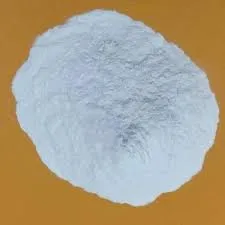
Noy . 08, 2024 21:58 Back to list
tile adhesive hpmc
The Role of HPMCs in Tile Adhesive Industry
In the construction and renovation sector, the importance of high-performance materials cannot be overstated. Among these, tile adhesive plays a crucial role in ensuring that tiles are securely attached to surfaces, thereby enhancing durability, aesthetics, and functionality. One of the key components that significantly enhances the performance of tile adhesives is Hydroxypropyl Methylcellulose (HPMC). This article will explore the properties, advantages, and applications of HPMC in tile adhesives, highlighting its significance in the industry.
Understanding HPMCs
Hydroxypropyl Methylcellulose is a cellulose ether derived from natural cellulose. It is a white or off-white powder that is soluble in water, allowing it to form a stable and viscous solution. HPMC is known for its film-forming abilities, water retention properties, and improved adhesion characteristics. These remarkable properties make it an essential additive in various construction materials, particularly in tile adhesives where performance and reliability are paramount.
Enhancing Tile Adhesives with HPMCs
1. Improved Workability One of the primary benefits of incorporating HPMC into tile adhesive formulations is the enhancement of workability. The material improves the spreadability of adhesive on surfaces, allowing for easier application. Contractors can work more efficiently, which is vital in large-scale projects where time is of the essence.
2. Water Retention HPMC enhances the water retention capacity of tile adhesives. This property is crucial because it allows the adhesive to remain workable for an extended period, providing a longer open time for tile placement. Additionally, effective water retention helps to prevent premature drying, which can compromise the bond strength.
tile adhesive hpmc

3. Increased Adhesion The inclusion of HPMC in tile adhesives results in improved adhesion to various substrates, including ceramic, porcelain, and stone tiles. This is especially beneficial in areas subjected to moisture, such as bathrooms and kitchens, where strong adhesion is critical for preventing tile detachment.
4. Flexibility and Strength HPMC contributes to the flexibility of the adhesive, allowing for slight movements in the substrate without cracking or compromising the bond. This is particularly valuable in regions with fluctuating temperatures or seismic activity, where materials must accommodate thermal expansion and contraction.
5. Resistance to Bacterial Growth HPMC is also known for its anti-fungal and anti-bacterial properties, which help in maintaining the hygiene of tiled surfaces. This is an essential feature in environments such as hospitals, kitchens, and bathrooms, where cleanliness is critical.
Environmental Considerations
As the construction industry evolves, there is a growing emphasis on sustainability and eco-friendly materials. HPMC is derived from natural cellulose, making it a biodegradable option compared to synthetic alternatives. Its use in tile adhesives is aligned with the industry’s trend toward greener building practices, enabling manufacturers to comply with regulatory requirements while delivering high-performance products.
Conclusion
In conclusion, Hydroxypropyl Methylcellulose plays an indispensable role in the formulation of tile adhesives. Its properties, including improved workability, water retention, and enhanced adhesion, make it a preferred choice for manufacturers aiming to deliver high-quality, reliable products. As construction demands evolve, the adaptability and sustainability of HPMC position it as a key ingredient in the future of tile adhesives. By understanding and leveraging the advantages of HPMCs, both manufacturers and contractors can ensure that their projects stand the test of time, offering aesthetic appeal and structural integrity in various environments.
-
Versatile Hpmc Uses in Different Industries
NewsJun.19,2025
-
Redispersible Powder's Role in Enhancing Durability of Construction Products
NewsJun.19,2025
-
Hydroxyethyl Cellulose Applications Driving Green Industrial Processes
NewsJun.19,2025
-
Exploring Different Redispersible Polymer Powder
NewsJun.19,2025
-
Choosing the Right Mortar Bonding Agent
NewsJun.19,2025
-
Applications and Significance of China Hpmc in Modern Industries
NewsJun.19,2025







